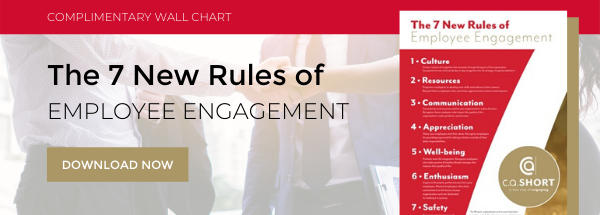Employee Engagement: Why People are Everything!

We’ve talked a lot about the true cost of employee disengagement, and how organizations can no longer afford to avoid the development of a comprehensive employee engagement strategy. More, we've discussed how productivity, profitability, and decreased turnover are positively affected by increased employee engagement; the steps to building the framework of an engagement strategy, how to determine employee engagement ROI, and who should be in charge of your engagement strategy. However, as I sit down to write this post I realize that we haven’t focused nearly enough time on the human & emotional costs of disengagement. To go beyond the numbers and the buzz words, and really focus on what it’s all about. The people.
 People are Everything
People are Everything
We all know that relationships, no matter their nature, take work to maintain. To be successful in our personal relationships, we make extra efforts to foster our valued friendships, call our parents each week, set date nights with our spouse, and leave work in time to tuck the kids in at night. But what about our work relationships?
Do we value our employees enough to add them to the list of relationships that take discretionary effort to sustain?
In order to build a successful employee engagement strategy, we have to stop viewing employees as our worker bees, order takers, and task doers and see them simply as our people.
The AON Hewitt 2014 Trends in Global Employee Engagement report tells us that there are various organizational factors that come into play when discussing people engagement ratings.
- Organizational Culture
- Recognition
- Career Opportunities
- Leadership
- Communication
- Learning & Development Tools
When Employee Engagement Becomes Personal
Perhaps we also need to look beyond the surveys, trend reports, and benchmarks. One study shows that 47% of employees say that problems in their personal lives affect their performance at work. While our people’s personal lives are not our business, their performance is. By considering that our people’s lives don’t begin at punch-in and end at punch-out, we can do more than just engage our people; we can inspire our people to do better.
As Joey Reiman aptly states in The Story of Purpose, “people are not motivated by the bottom line – they want to feel like they’re a part of something bigger than themselves.” In order to become an organization that gives our people purpose, we have to find out what they care about. What motivates them - Both in and outside of the office.
 At C. A. Short, we are your partner for increased employee engagement resulting in increased performance outcomes to grow your bottom line. Our process and research-based platform help you engage your team in order to increase your bottom line, motivate your staff to the benefit of the entire organization, and reward your people for the positive changes they make. To request a Complimentary Consultation, please click here.
At C. A. Short, we are your partner for increased employee engagement resulting in increased performance outcomes to grow your bottom line. Our process and research-based platform help you engage your team in order to increase your bottom line, motivate your staff to the benefit of the entire organization, and reward your people for the positive changes they make. To request a Complimentary Consultation, please click here.